In 1938, the ballistite loops were removed from the lids of basic pouches and utility pouches (Canadian, Indian and some South African pouches would continue to include them throughout the war).
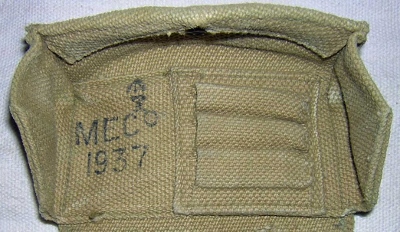 >
> 
 >
> 
In 1939, a longer thigh strap (32”) was introduced for the RAC holster.

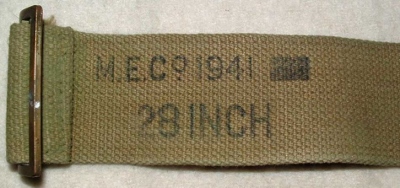 >
> 
In 1939, an Extra Long size was introduced for the belt.

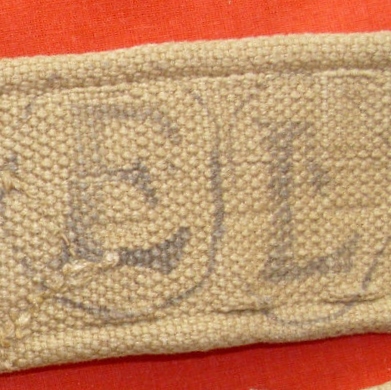

In 1939, the officer’s haversack was introduced.

In 1940, braces and shoulder straps made of multiple pieces began to appear from smaller firms that could not replicate the reduction weaving of Mills and Wrights. These were produced simultaneously to the reduction woven examples. Utility pouch yokes and RAC holsters included this modification as well later in the war.
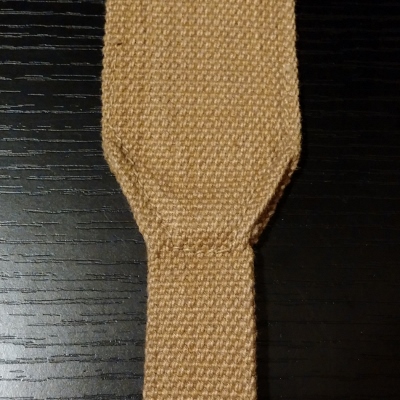 >
> 
 >
> 
In 1940, water bottle carriers switched from a framework construction to a sleeve pattern (shorter sleeves were mostly produced by smaller firms from 1940-1941, with full length sleeves that covered the entire bottle manufactured mainly from 1942-1945)
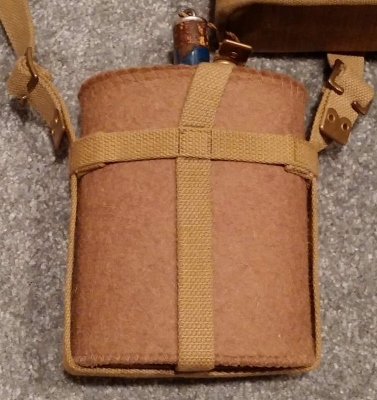 >
> 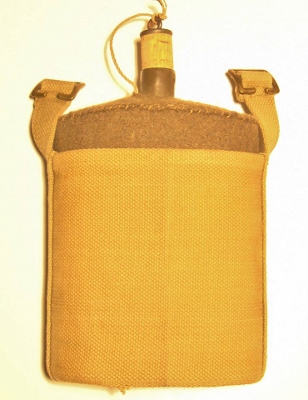 >
> 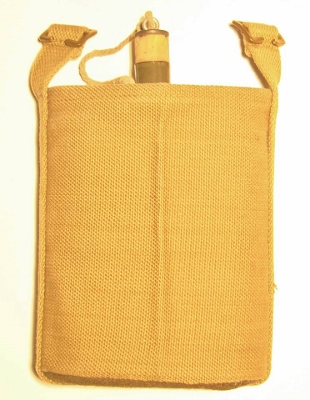
In 1940, long braces were introduced and sizes began to be included on braces markings (the loop on the left brace also increased in length on the long braces).
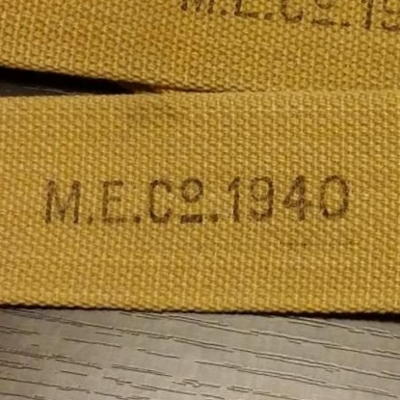 >
> 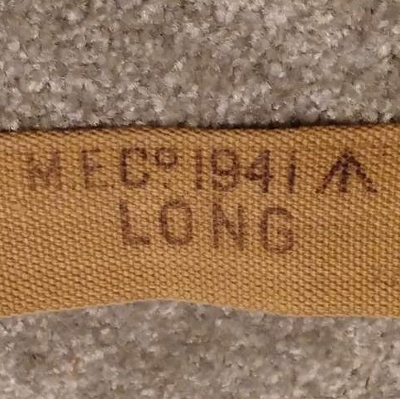 +
+ 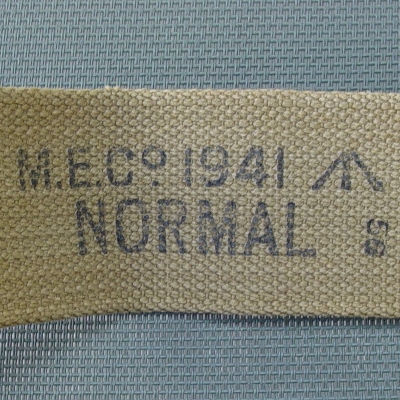
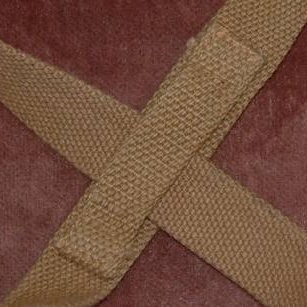 >
> 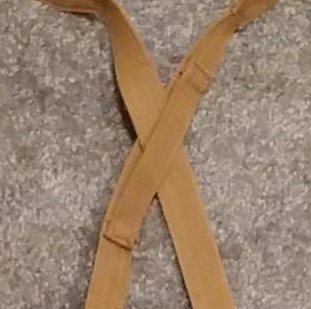
In 1940, the Mk II basic pouch with its belt hooks set 1” lower, replaced the Mk I (making the pouch more comfortable by allowing it to sit higher).
 >
> 
In 1940, Mills briefly produced braces of a tubular construction.
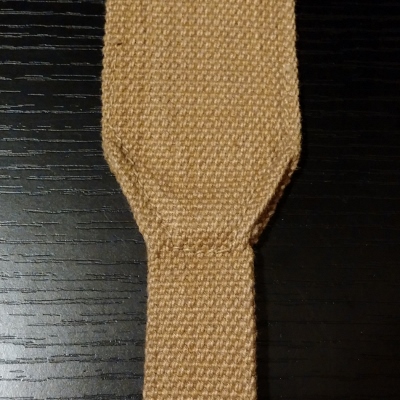 >
> 
In 1940-41, binocular pouches began to include side buckles.
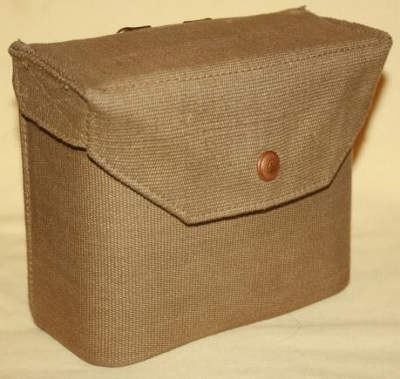 >
> 
In 1940 (possibly earlier), belts with attachment loops made from a separate strips of webbing began to appear from smaller firms that could not replicate the integral weaving of Mills and Wrights. These were produced simultaneously to integrally woven belts.
 >
> 
In 1940 (possibly earlier), frogs made entirely of 1 1/4” webbing appeared (the original pattern called for a 1 1/2” body, 1 1/8” upper scabbard loop & 1 1/2” lower scabbard loop). Although this measure to ease manufacture was adopted by smaller firms, Mills continued to produce frogs according to original pattern dimensions.
 >
> 
In 1941 (possibly earlier), ammunition and compass pouches made with a stitched box construction began to appear from smaller firms that could not replicate the integrally woven bellows base gussets of Mills and Wrights pouches. These were produced simultaneously to integrally woven pouches.
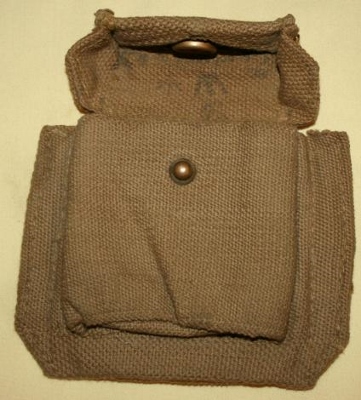 >
> 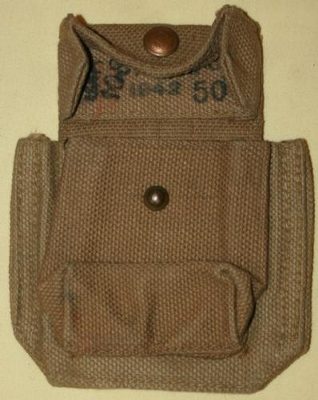
From 1941-1942, laminated canvas items began to be produced by some smaller firms. These items included slings, braces, shoulder straps, support straps and the straps on packs.
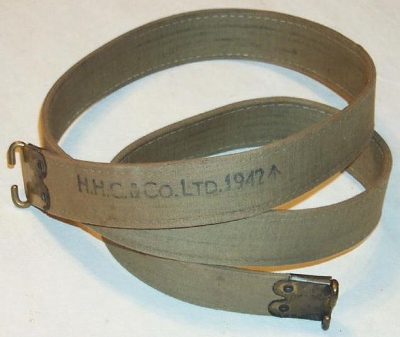
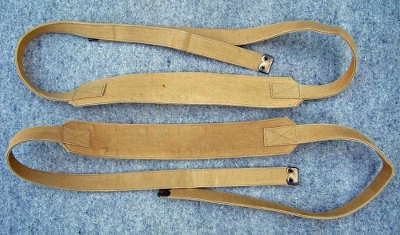
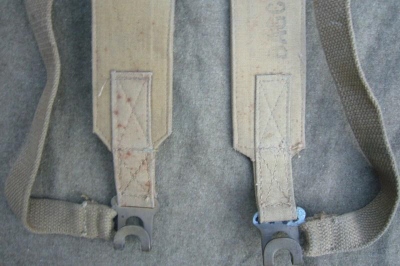
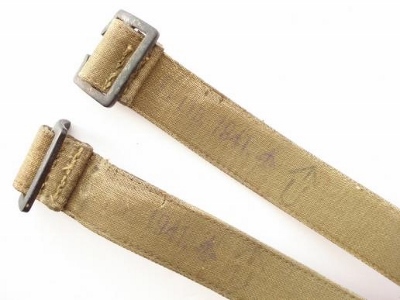


In 1942, the Mk III basic pouch with its 1/2” longer construction, replaced the Mk II (to accommodate Sten gun clips).
 >
> 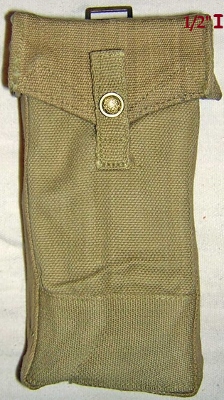
In 1943, a new style of belt was introduced that replaced the brass tabs and keepers with webbing equivalents. This modification was adopted by the smaller and larger firms alike.
 >
> 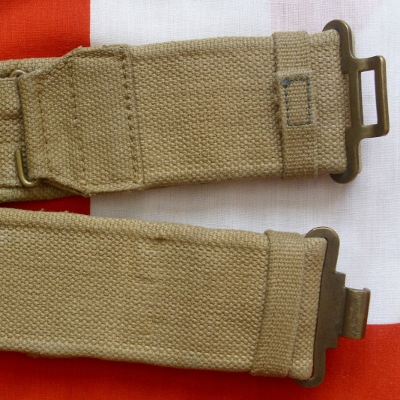
In 1943, a new style of attachment for braces and shoulder straps was introduced. Like the new style of belt, this modification was adopted by the smaller and larger firms alike (although Mills continued to produce shoulder straps of the single piece type for some time).
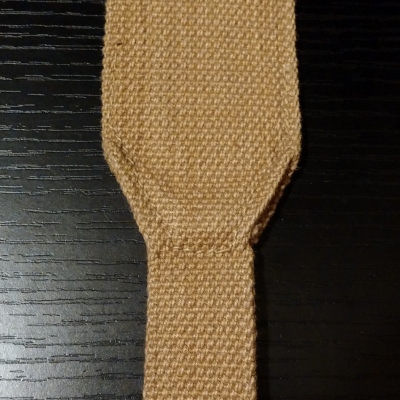 >
> 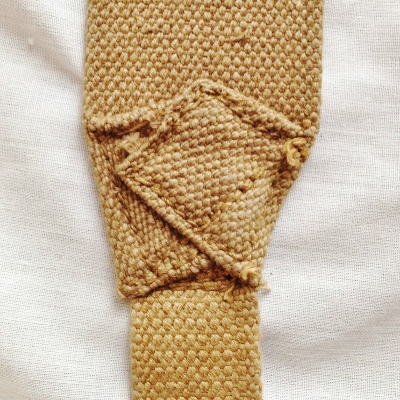
In 1943, the rear tabs on large packs and haversacks switched to laminated thin webbing without a 2” brass tip (Mills resumed using the brass tips by the end of the war and some firms, like M, never used this modification at all).
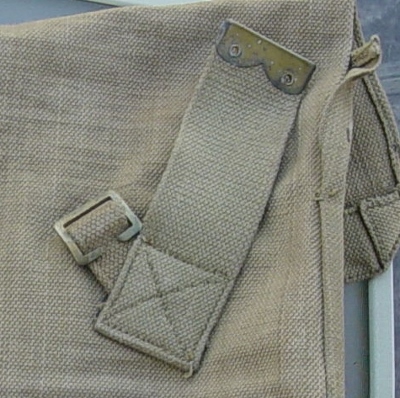 >
> 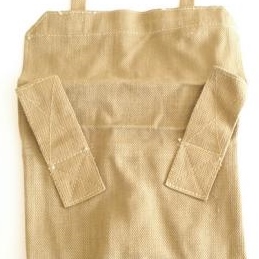
In 1943 (not certain), shoulder straps without 2” brass tips appeared.

In 1943, Sheradised steel fittings began to be used intermittently (many items had a mix of brass and steel fittings). These fittings included gate-leg buckles, 2” Twigg buckles, 1” Twigg buckles, 1” closed bar buckles, 3/4" closed bar buckles, 4-bar Mills patent buckles, "hook and loop" belt buckles, sling catches, haversack hooks, 2” tips, 1” tips, 3/4" tips, 2 1/4" double hooks & 2” double hooks.


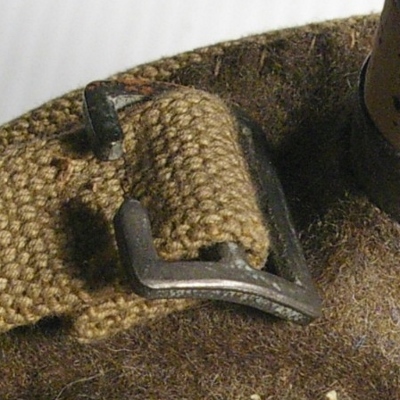

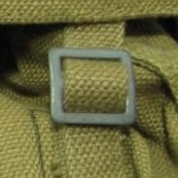
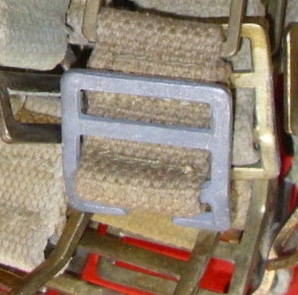


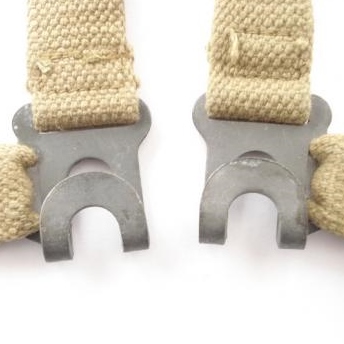

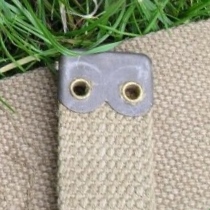



In 1944, special basic pouches were introduced for motor transport drivers with a simple webbing belt loop.

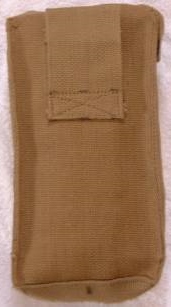
In 1944, quick-release closures replaced the press-stud closures on Mk III basic pouches and a grommet was added at the bottom of the pouch for drainage (these modifications did not see much use during the war).
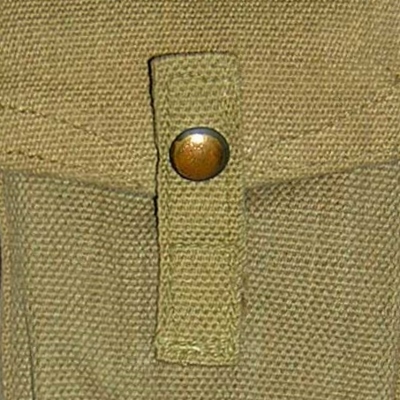 >
>  +
+ 
In 1945, button holes began to be woven into the upper scabbard loop of frogs during manufacture (the entire frog continued to be made of 1 1/4" webbing).
 >
> 
In 1945, a retaining strap for the helve was added to the entrenching tool carrier (this modification did not see much use during the war).
 >
> 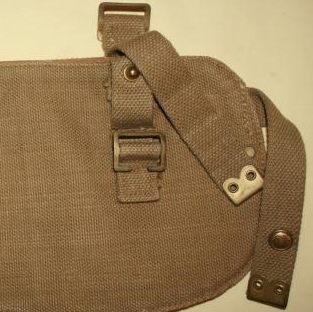
*Many of the above pictures came from the excellent reference site Karkee Web - http://karkeeweb.com/1937main.html
*I do not have any rights to the above pictures, they are used merely for reference purposes.
 >
> 
 >
> 
In 1939, a longer thigh strap (32”) was introduced for the RAC holster.

 >
> 
In 1939, an Extra Long size was introduced for the belt.



In 1939, the officer’s haversack was introduced.

In 1940, braces and shoulder straps made of multiple pieces began to appear from smaller firms that could not replicate the reduction weaving of Mills and Wrights. These were produced simultaneously to the reduction woven examples. Utility pouch yokes and RAC holsters included this modification as well later in the war.
 >
> 
 >
> 
In 1940, water bottle carriers switched from a framework construction to a sleeve pattern (shorter sleeves were mostly produced by smaller firms from 1940-1941, with full length sleeves that covered the entire bottle manufactured mainly from 1942-1945)
 >
>  >
> 
In 1940, long braces were introduced and sizes began to be included on braces markings (the loop on the left brace also increased in length on the long braces).
 >
>  +
+ 
 >
> 
In 1940, the Mk II basic pouch with its belt hooks set 1” lower, replaced the Mk I (making the pouch more comfortable by allowing it to sit higher).
 >
> 
In 1940, Mills briefly produced braces of a tubular construction.
 >
> 
In 1940-41, binocular pouches began to include side buckles.
 >
> 
In 1940 (possibly earlier), belts with attachment loops made from a separate strips of webbing began to appear from smaller firms that could not replicate the integral weaving of Mills and Wrights. These were produced simultaneously to integrally woven belts.
 >
> 
In 1940 (possibly earlier), frogs made entirely of 1 1/4” webbing appeared (the original pattern called for a 1 1/2” body, 1 1/8” upper scabbard loop & 1 1/2” lower scabbard loop). Although this measure to ease manufacture was adopted by smaller firms, Mills continued to produce frogs according to original pattern dimensions.
 >
> 
In 1941 (possibly earlier), ammunition and compass pouches made with a stitched box construction began to appear from smaller firms that could not replicate the integrally woven bellows base gussets of Mills and Wrights pouches. These were produced simultaneously to integrally woven pouches.
 >
> 
From 1941-1942, laminated canvas items began to be produced by some smaller firms. These items included slings, braces, shoulder straps, support straps and the straps on packs.






In 1942, the Mk III basic pouch with its 1/2” longer construction, replaced the Mk II (to accommodate Sten gun clips).
 >
> 
In 1943, a new style of belt was introduced that replaced the brass tabs and keepers with webbing equivalents. This modification was adopted by the smaller and larger firms alike.
 >
> 
In 1943, a new style of attachment for braces and shoulder straps was introduced. Like the new style of belt, this modification was adopted by the smaller and larger firms alike (although Mills continued to produce shoulder straps of the single piece type for some time).
 >
> 
In 1943, the rear tabs on large packs and haversacks switched to laminated thin webbing without a 2” brass tip (Mills resumed using the brass tips by the end of the war and some firms, like M, never used this modification at all).
 >
> 
In 1943 (not certain), shoulder straps without 2” brass tips appeared.

In 1943, Sheradised steel fittings began to be used intermittently (many items had a mix of brass and steel fittings). These fittings included gate-leg buckles, 2” Twigg buckles, 1” Twigg buckles, 1” closed bar buckles, 3/4" closed bar buckles, 4-bar Mills patent buckles, "hook and loop" belt buckles, sling catches, haversack hooks, 2” tips, 1” tips, 3/4" tips, 2 1/4" double hooks & 2” double hooks.














In 1944, special basic pouches were introduced for motor transport drivers with a simple webbing belt loop.


In 1944, quick-release closures replaced the press-stud closures on Mk III basic pouches and a grommet was added at the bottom of the pouch for drainage (these modifications did not see much use during the war).
 >
>  +
+ 
In 1945, button holes began to be woven into the upper scabbard loop of frogs during manufacture (the entire frog continued to be made of 1 1/4" webbing).
 >
> 
In 1945, a retaining strap for the helve was added to the entrenching tool carrier (this modification did not see much use during the war).
 >
> 
*Many of the above pictures came from the excellent reference site Karkee Web - http://karkeeweb.com/1937main.html
*I do not have any rights to the above pictures, they are used merely for reference purposes.
Last edited by Wgrenadier on Sun Nov 01, 2015 3:43 pm; edited 3 times in total



